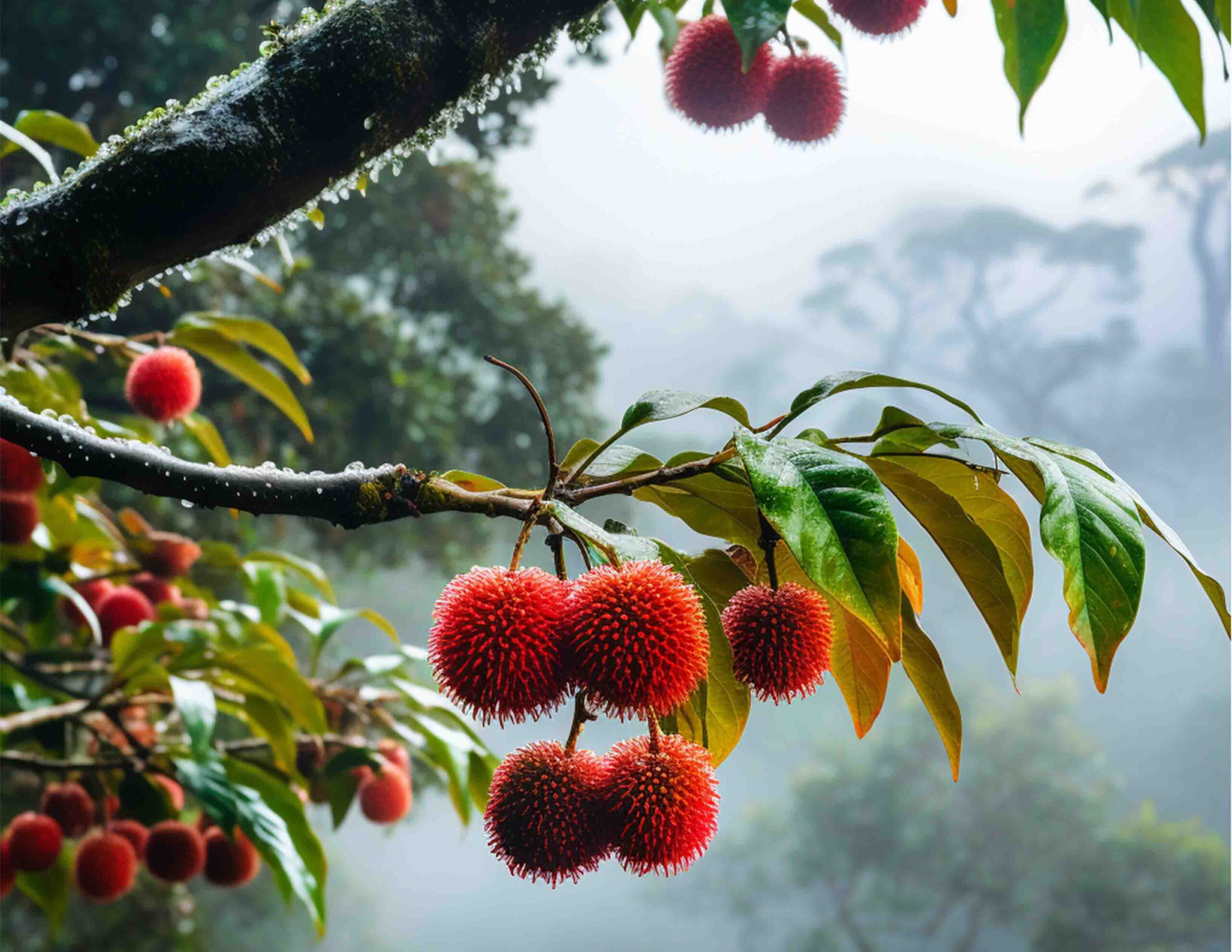Rambutan: Nature’s Hairy Gem of the Tropics
In the lush forests of Southeast Asia, amidst a pantheon of exotic fruits, stands a standout: the rambutan. Its hairy, almost alien-like exterior might seem uninviting, but those who dare are rewarded with a burst of succulence and flavor.
Historical Backdrop: From Humble Origins to Global Stardom
The roots of the rambutan tree are deeply embedded in the history of the Malay-Indonesian region. The name itself, “rambutan,” stems from the Malay word ‘rambut,’ translating to “hair.” A fitting moniker, given its distinctive, hair-covered appearance.
The fruit was largely confined to Southeast Asia until the 19th century when it began to journey to other parts of the world, courtesy of traders and explorers.
Sensory Delight: Unraveling the Flavor
Cracking open the rind reveals a translucent, fleshy orb, reminiscent of lychee or grapes but distinguished in taste. Sweet with a subtle tartness, its flavor evokes hints of strawberry and pineapple. Central to the flesh lies a seed, which, although inedible raw, is sometimes roasted and consumed in several cultures.
Nutritional Bounty: More Than Just a Tasty Treat
The rambutan, while delightful in taste, is also a powerhouse of nutrition:
- Vitamin C: An essential nutrient aiding tissue repair, it also offers antioxidant properties, warding off free radicals.
- Iron: Integral for energy production and metabolism, iron is a vital component of hemoglobin.
- Fiber: Beneficial for gut health, it aids in digestion and can help stabilize blood sugar levels.
From Tree to Table: Cultivation Nuances
Thriving in warm, tropical climates, the rambutan tree prefers well-drained soils, flourishing best under consistent rainfall. While they produce fruit primarily twice a year, certain regions and specific farming practices can yield more frequent harvests.
Global Gastronomy: The Culinary Versatility of Rambutan
The fruit’s versatility shines in various dishes:
- Desserts: Their sweet profile makes them ideal for sorbets, tarts, and other confections.
- Beverages: From refreshing cocktails to health-packed smoothies, rambutans lend themselves beautifully.
- Savory dishes: In dishes like Thai salads or Filipino stews, they introduce a sweet contrast.
Eco-Challenges and Sustainable Solutions
Despite its popularity, rambutan cultivation isn’t without challenges. Pests, changing rainfall patterns due to climate change, and habitat destruction loom large. However, sustainable farming initiatives, organic cultivation practices, and reforestation efforts promise hope for this tropical marvel.
Looking Forward: The Ever-evolving Journey of Rambutan
From ancient tales in the Malay Archipelago to becoming a trendy fruit in Western supermarkets, the rambutan’s journey mirrors globalization itself. As culinary boundaries dissolve, and the world becomes a global village, fruits like rambutan serve as delicious reminders of nature’s vast diversity.
The rambutan, with its enticing mix of history, flavor, and health benefits, remains a testament to nature’s ability to surprise and delight. It beckons fruit lovers and culinary adventurers alike, promising a taste of the tropics with every bite.

